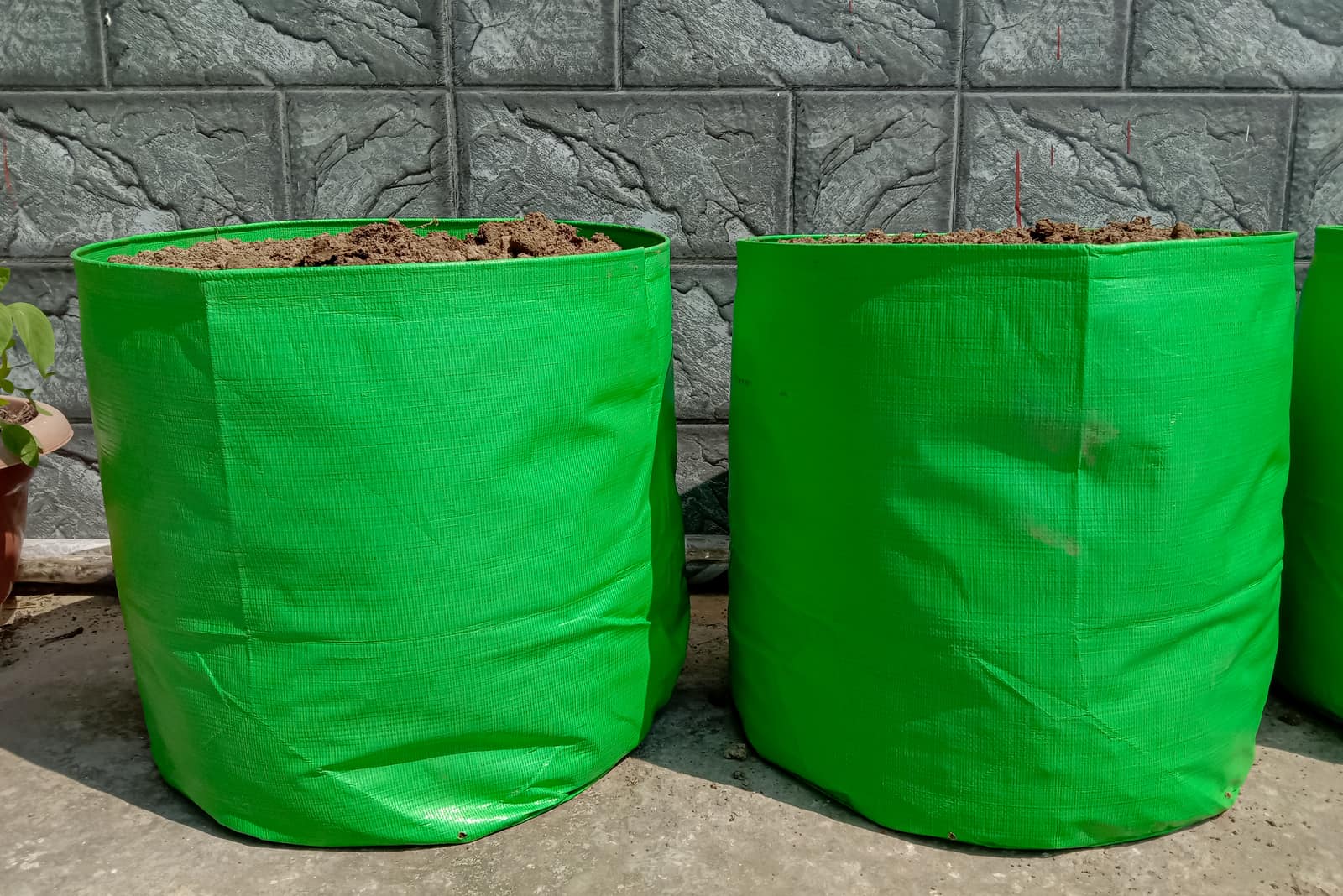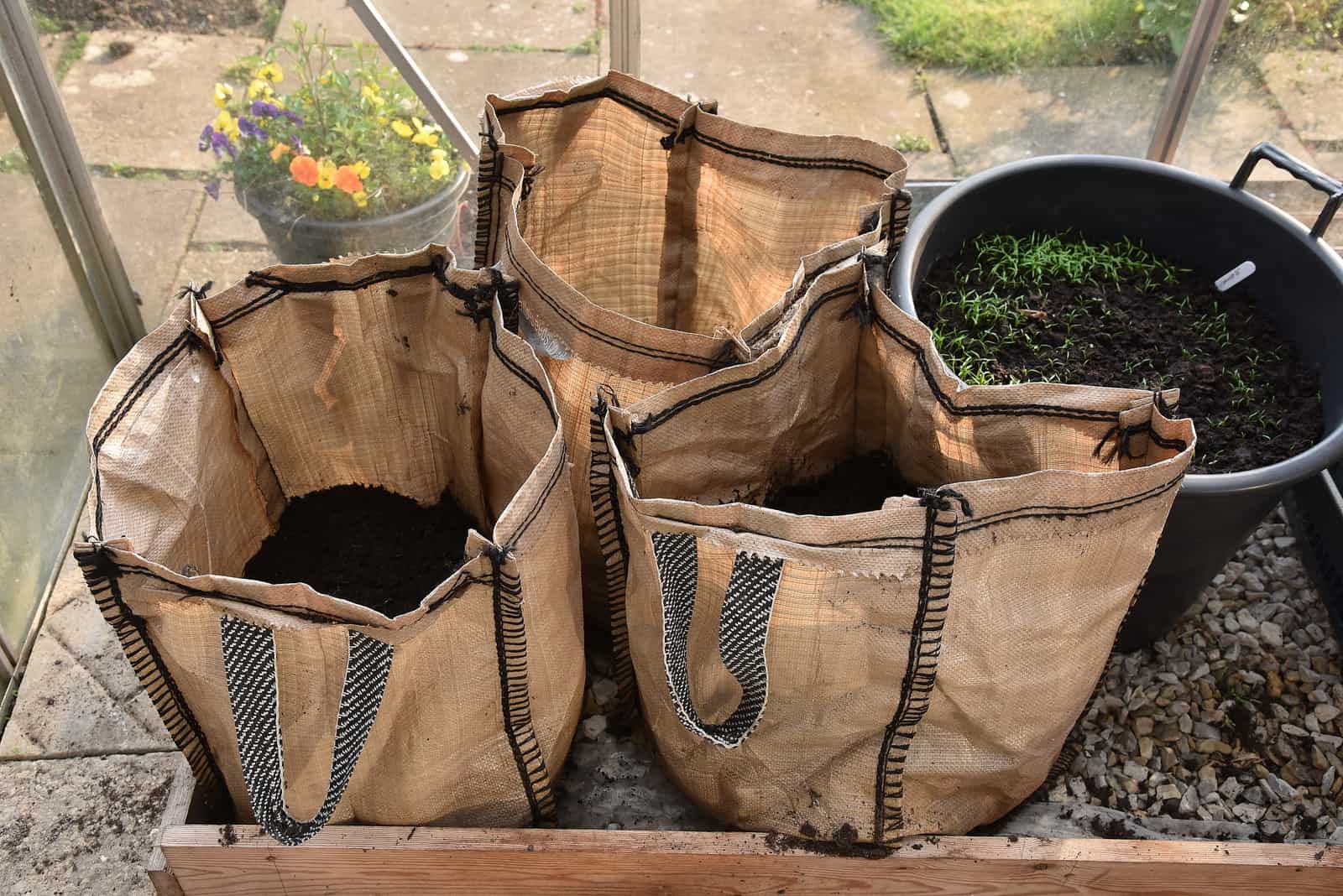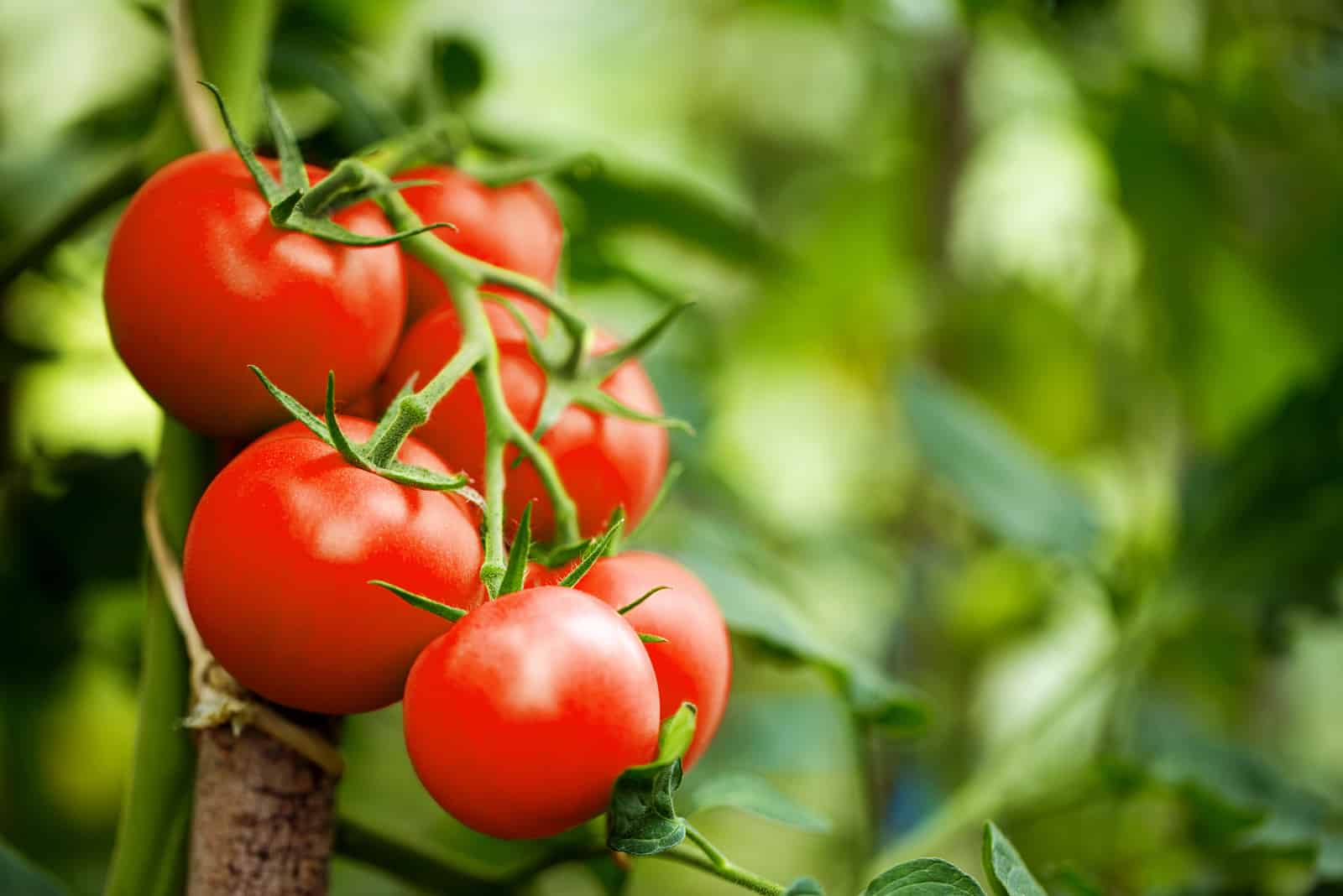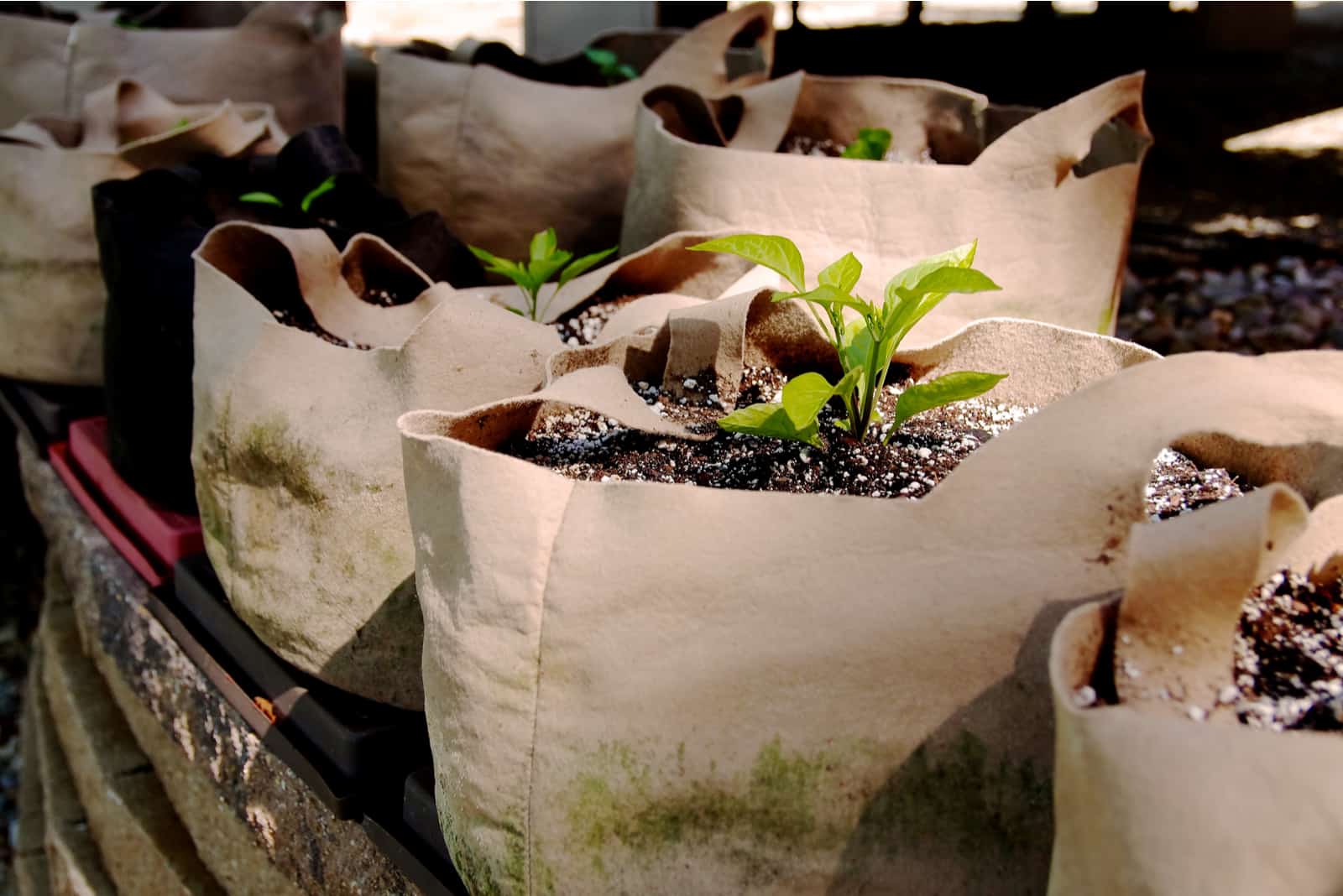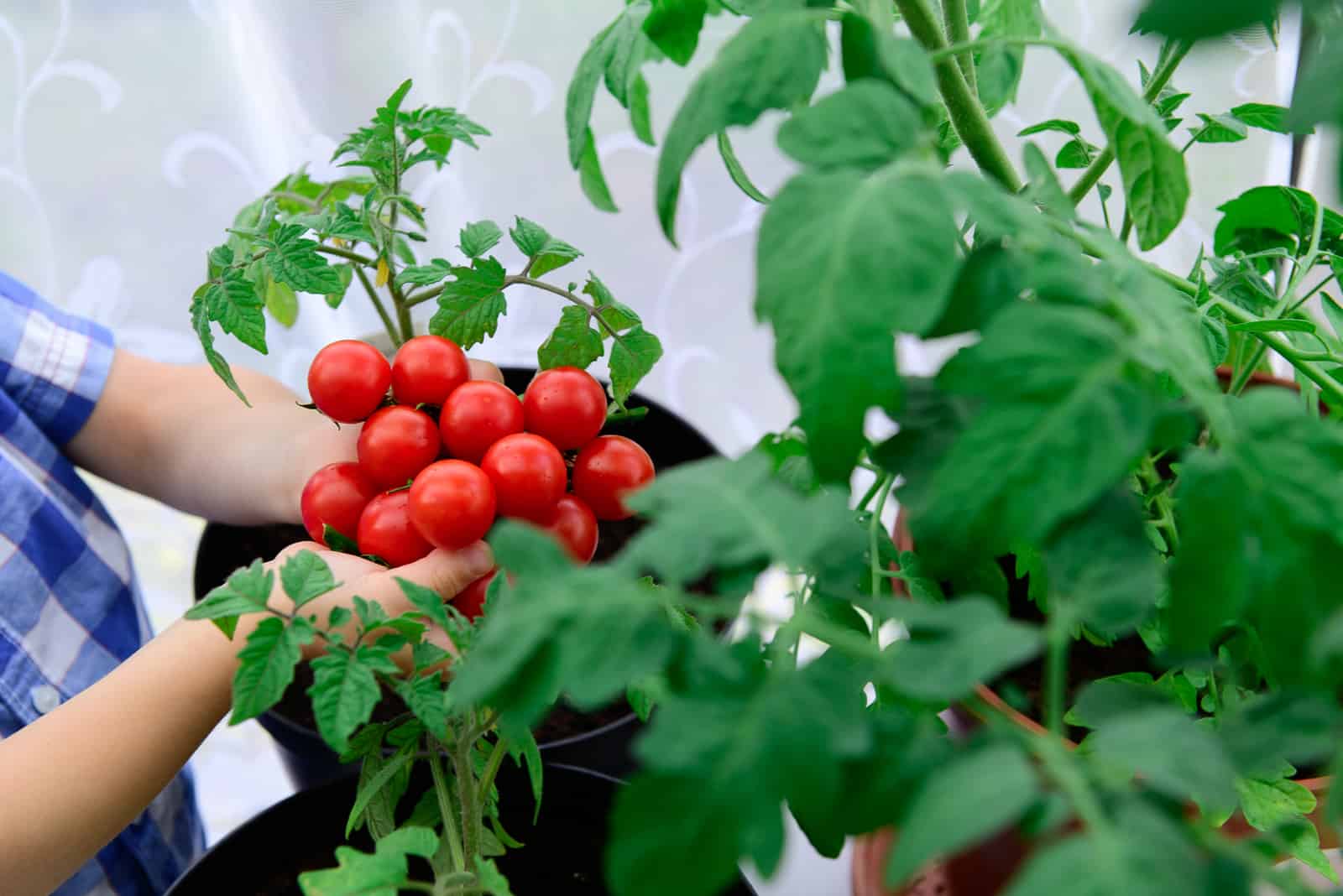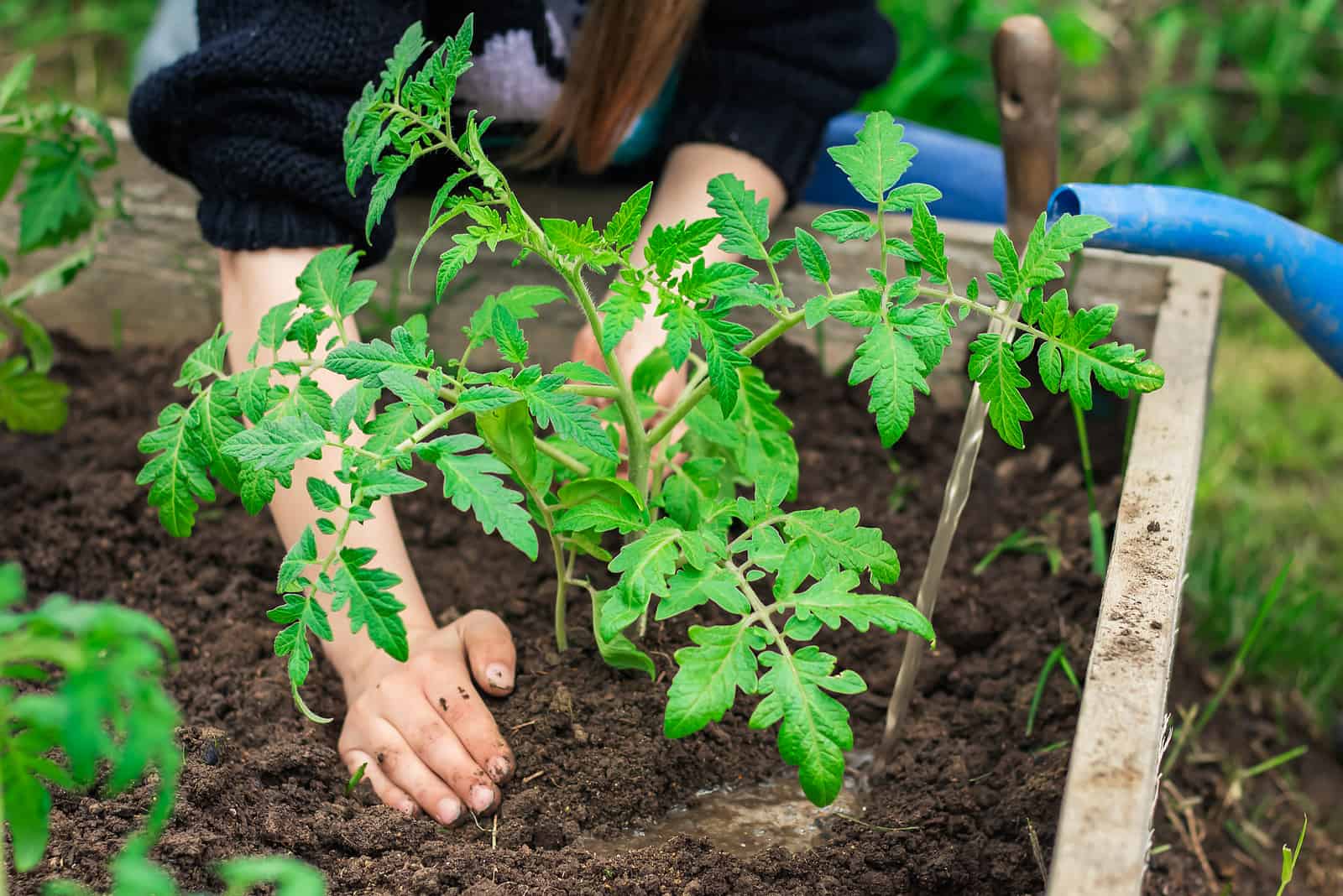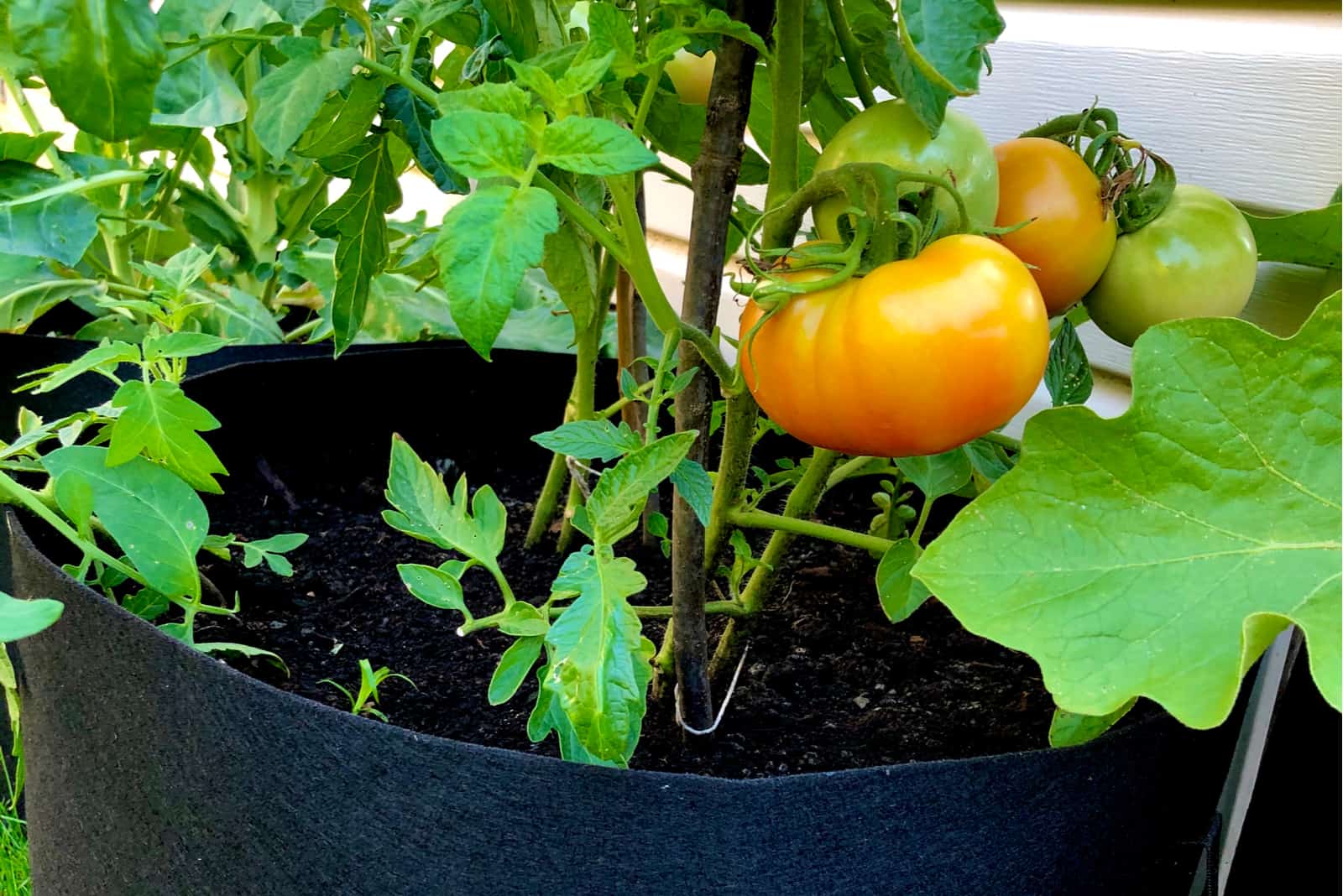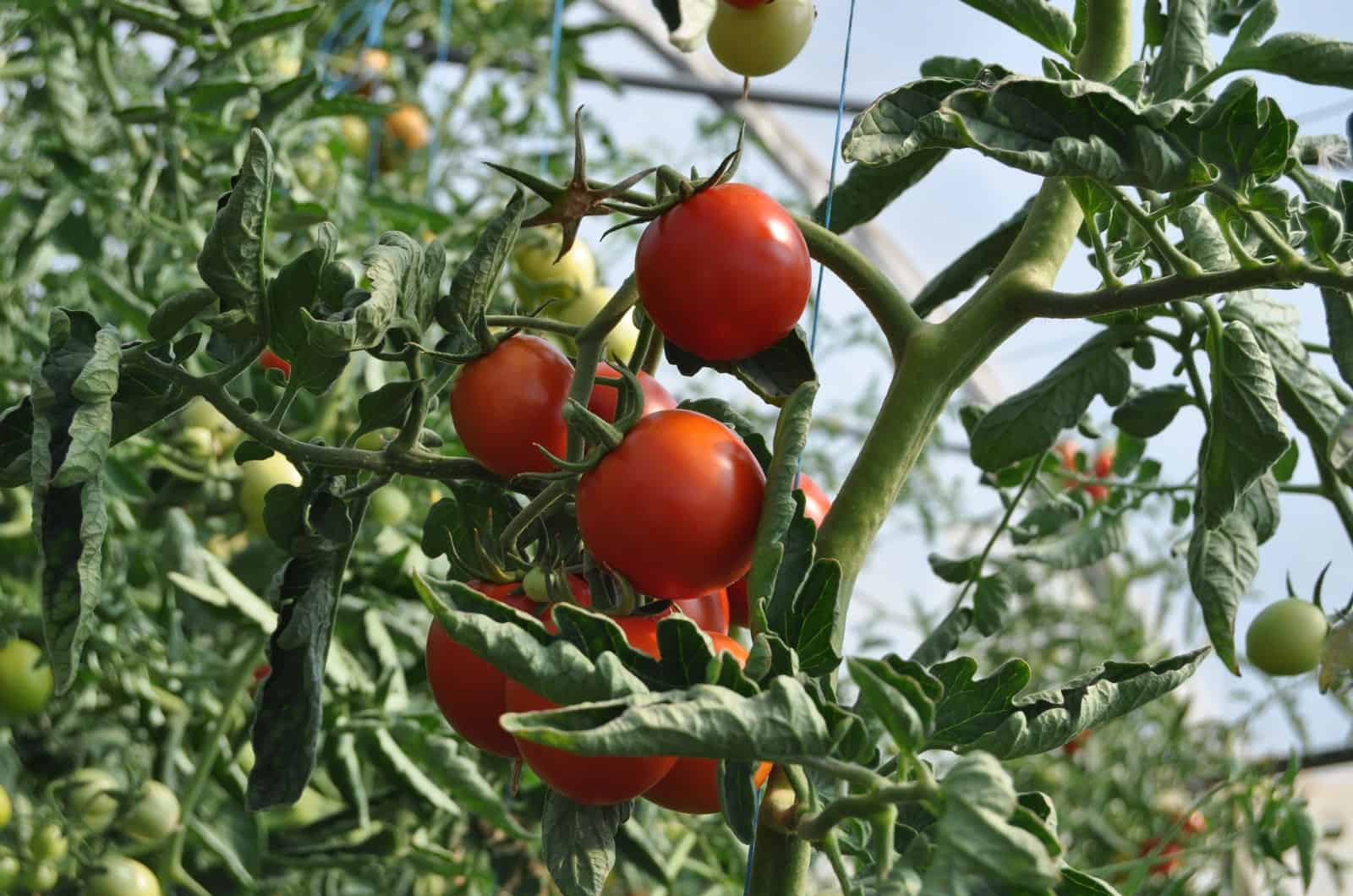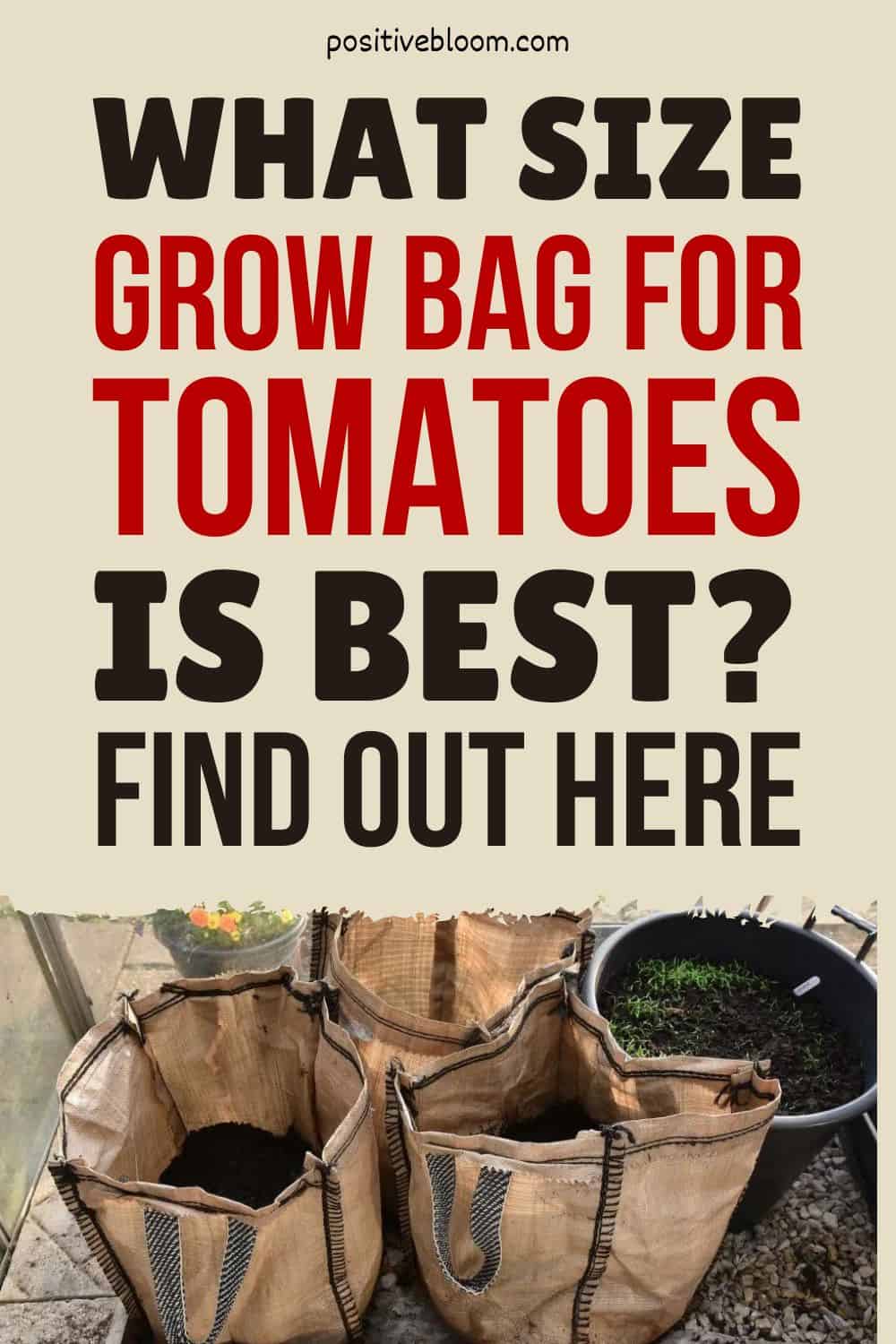Positive Bloom is an Amazon Associate and we earn from qualifying purchases through these links at no extra cost to you.
There’s nothing better than homegrown tomatoes. However, if you have limited garden space then tomatoes from stores can work just fine.
Luckily, you can now grow tomatoes in grow bags to get healthy and fresh tomatoes.
Many growers claim that the best way to grow tomatoes is in grow bags.
Why? Because you can use fresh compost every year and no pests or diseases can affect your tomatoes.
Many growers who decide to use grow bags wonder what size grow bag for tomatoes is best.
Now it’s time to find out the answer!
What Size Grow Bag For Tomatoes Is Best?
There’s one simple rule when it comes to the size of a grow bag for tomatoes; the larger the bag, the better tomatoes!
If you are looking for the right size grow bag for your tomatoes, bear in mind that a 10-gallon grow bag should be the smallest bag you consider purchasing.
When it comes to the nutrients that tomatoes need, only 10 gallon and larger grow bags will be able to provide your tomatoes with the amount they actually need.
Why is that so?
Tomato roots need a lot of space to grow, and a bag of this size is approximately 15 inches in diameter and 12 inches in depth, so it will work great for your precious tomatoes.
A 10-gallon grow bag will meet the requirements of one tomato plant.
I’m sure you’re probably wondering how large a grow bag needs to be in order to grow more than one tomato plant. In this case, I suggest larger bags such as 20 to 30 gallons.
Most 20 or 30-gallon bags are at least 14 inches in depth, so the roots of your tomatoes will have plenty of space to grow.
Factors That Determine The Size Of Grow Bag
Actually, the rule for tomato bags is simple: If they are too small, the space for root growth will be limited. In this case, your tomatoes will not receive the right amount of nutrients or water that it needs, which will result in stunted growth.
What size does a tomato grow bag need to be for successful growth? There are a couple of factors to take into consideration.
The first one is the variety of tomatoes. Of course, smaller varieties don’t need much space for their roots to grow so a 10-gallon bag will work just fine.
The second factor is soil quality. You can choose between potting soil and garden soil. If you use potting soil, feel free to use smaller bags. On the other hand, garden soil is more compact and your tomatoes need more nutrients, so in this case a larger bag with more garden soil should do the trick.
Another factor that determines the size of the bag is indoor or outdoor tomato growing. Outdoor conditions are completely different from those inside, so the size of the bag will be different. For outdoor container gardening, you’ll need larger bags.
Tomatoes can grow as fruit vines, and when grown in bags they’ll also need support, such as a trellis. Choose larger bags to meet the tomatoes’ requirements.
I must warn you that you will need to relocate your tomatoes from time to time. For example, if your tomato receives too much light you’ll want to move it, so a heavy grow bag isn’t something you want to have deal with.
Determinate vs Indeterminate Tomatoes
Beginner growers should know that there are two types of tomatoes: determinate and indeterminate.
There are three main differences between the two: size, growth pattern, and fruiting pattern.
Determinate tomatoes are bushier, more compact, and produce all their tomato fruit at once, unlike indeterminate tomato varieties.
Determinate types of tomatoes are great for impatient gardeners because you’ll get all the crops at the same time. These tomatoes first grow vertically, and then stop growing when they reach a certain size.
The majority of early-ripening tomato varieties are determinate, which means they have less flavor than indeterminate ones (I still find them tasty). These tomatoes bear fruit for about four to five weeks.
The most common determinate tomato varieties are Roma, Celebrity, and Rutgers. If you are looking for the seeds of determinate tomatoes, look for a “DET” abbreviation on packages.
Indeterminate Tomatoes
Unlike determinate varieties, indeterminate tomatoes (“INDET” abbreviation on packages) have longer stakes and vines and the stems demand more support. If you want fresh, flavorful tomatoes all season long, indeterminate tomatoes are the ideal choice because they produce crops throughout the entire season (tomato sauces all year long!).
If you are looking for indeterminate tomato varieties, these are great options: Beefsteak, Better Boy, Big Mama, Cherry tomatoes, and heirloom tomatoes.
Luckily, both types will grow healthily in grow bags.
Size Of Grow Bags For Determinate Tomatoes
As previously mentioned, determinate tomato types are smaller and can perfectly grow in smaller grow bags.
If you have a determinate cultivar, grow it in a 10-gallon bag and it will give you tasty crops!
You will find most grow bags have a diameter of 10 inches and a height of 8 inches and more. The general rule here is that you’ll need a larger grow bag no matter which variety you grow.
Size Of Grow Bags For Indeterminate Tomatoes
When indeterminate tomatoes mature, they need a strong root system. This improves water and nutrient uptake.
Therefore, the roots will need more soil to support them and fulfill their needs. That’s why the size of the bag matters. If you decide to grow some indeterminate tomato cultivars, choose 20-gallon and larger grow bags.
Make sure the bag is at least 15 inches wide and 12 inches deep.
Best Grow Bags For Tomatoes
Now that you know the size of the bag you’ll need to grow tomatoes, it’s time to look at the best grow bags on the market. Luckily, all of them are available on Amazon!
The first grow bag, and my top pick, is from Vivosun:
These bags only weigh 2.84 pounds and are made of thickened, non-woven fabric. Non-woven fabrics ensure aeration for the roots and are great for planting tomatoes in square-foot raised pots.
It saves space and makes the most of a limited area.
Another excellent high quality grow bag comes from Smart Pots:
It’s made of fabric and is easy to install. It provides the aeration that is really important for healthy plant growth.
It repels ground pests like gophers and moles. They are affordable and weigh only 1.2 pounds.
One more amazing fabric grow bag comes from Gardzen:
It weighs 3.5 pounds and is made of durable non-woven fabric. Additionally, it’s washable and BPA free. Double thick handles make it easy to move around.
Grow Bag Advantages
Although you can get healthy tomatoes by using plastic pots, fabric bags are way better to use for many reasons.
Let’s look at the benefits of growing tomatoes in fabric bags.
Good Drainage And Aeration
Grow bags are made of the breathable fabric essential for water drainage and aeration.
Other garden pots don’t have this feature, which is why fabric grow bags stand out.
Why is this important? When the container lacks aeration, it allows the roots to spread until they reach the container walls. Roots react by sending signals to the plant to grow more roots. As a result, you end up with a root-bound plant.
Unfortunately, so many roots filling the container may cause your plant to suffocate.
Healthier Root Growth
The great thing about these bags is that you avoid root-binding by using them. Interestingly, the walls of these bags burn the roots when they reach them.
This enhances the growth of healthy roots, This process is known as air-pruning.
If you grow tomatoes in pots, be aware that their roots grow in circles, and as a result they may become entangled. Larger pots lack drainage and cause poor oxygen supply. Additionally, water stagnates and the soil becomes soggy.
When the tomato roots reach the plastic pot walls, they continue to grow because they need more water and nutrients. As a consequence, the tomato roots overgrow the pot.
Why is this a problem? Each plant has a unique structure, and if the roots become restricted it may harm this structure. The problem is that it can reduce the plant’s ability to absorb nutrients and water.
If tomato roots lose their ability to uptake nutrients and water, it will affect their stem tissue and they won’t be able to absorb nutrients at all.
I’m sure you can guess what that would do to the plant!
How Do Fabric Grow Bags Solve The Root Growth Issue?
Luckily, fabric grow bags help solve the problem of root restriction. When you grow tomatoes in pots like these, the roots detect the drier soil exposed to the air when they meet the edges of the fabric pot.
Interestingly, the roots become aware that they have reached their growth limit at this point.
Air-pruning is essential for healthy growth as it quickly eliminates the roots that may damage the plant’s structure (these roots are called “girdling roots”) and prevents their expansion.
Additionally, air pruned roots produce more healthy root tips that help in water and nutrient absorption.
On the other hand, plastic pots allow the roots to expand, which constricts nutrient uptake.
Grow bags are also better for transplanting tomatoes.
Temperature Control
Plastic pots can become pretty hot when exposed to direct light in the summer.
They trap all the heat, which can burn your tomatoes. Plastic pots aren’t breathable.
On the other hand, fabric bags help regulate temperature because they provide good air circulation and heat can escape from the grow bag on all sides.
Storage
Plastic pots, no matter the size, need more storage space because you can’t fold them. You have to avoid placing them where you might crush or break them.
Fabric pots are foldable, so you don’t have to worry if you only have a small space to store them.
This means you can use fabric grow bags during the growing season and store them easily in the off-season.
Are Grow Bags Toxic?
Many growers believe that planting tomatoes in the garden is how to get the best tomatoes. So, I understand your concern.
If the containers for growing plants have any harmful chemicals in them, they can quickly transfer them to the plant.
The majority of grow bags are made of non-woven fabric like polypropylene plastic, which is BPA-free (PP).
Polypropylene is a food-safe plastic commonly used for food storage. It’s labeled #5 on containers. Just to remind you, food-safe plastics are numbered #1 (PET), #2 (HDPE), #4 (LDPE), and #5 (PP).
This plastic is safe to store food, so it’s safe for growing plants, especially plants that will be harvested above the ground like tomatoes, berries, or leafy greens.
However, I suggest you always check the labels and consult with the manufacturer.
What Is Better For Tomatoes: Pots vs Ground
There are advantages and drawbacks to growing tomatoes in both grow bags and in the ground.
If you’re a beginner at growing tomatoes, you might be wondering why some growers choose to plant tomatoes in containers rather than directly into the soil of their backyard.
Planting Tomatoes In The Ground: Pros And Cons
Planting tomatoes straight into the ground does have its benefits. Your tomatoes will require less care because they will get all of their nutrients from the ground.
There is a small possibility that your tomatoes will catch some disease when planted directly in the ground, but they will produce a lot of crops.
If you want to keep growing tomatoes each year in the same spot, you’ll have to maintain the soil well. This includes replacing the soil because tomatoes deplete the nutrients from the soil over time.
Unfortunately, not everyone has enough space for tomato planting. This is a fruit that many growers produce in their greenhouses to ensure its in the best possible environment.
Planting Tomatoes In Pots: Pros And Cons
Containers and grow bags will be helpful if you only have a small space but want to grow tomatoes. If you have a greenhouse, feel free to place pots with tomatoes in your greenhouse.
You can use fresh compost every year to ensure that your plants get the nutrients they require. The great news is that tomatoes are less susceptible to pests and diseases when grown in bags.
If you decide to grow your tomato plants in grow bags or pots, you’ll need to water them more often.
You’ll also need to ensure the appropriate moisture balance to prevent the soil drying out.
Moisture imbalance may stress your tomato and increase susceptibility to diseases.
Tips For Growing Tomato Plants In Grow Bags
Now we know that growing tomatoes in grow bags is a great way to get healthy crops, but the bag alone won’t make your plant healthy. You’ll need to ensure conditions similar to garden soil.
The good thing is that you can control the environment when you grow your tomatoes in bags.
Let’s find out how to get healthy and fresh tomatoes!
Light And Temperature
Tomatoes need at least 6 to 8 hours of direct sunlight per day. When determining where to put tomatoes grown in pots, try finding somewhere that gets a lot of sun.
If your tomatoes aren’t getting enough sunlight, move the containers to a sunnier spot.
Please check the spot throughout the entire growing season in case it becomes shaded. This is especially important if there is shade during the warmest period of the day. Of course, this will depend on the time of the year as well.
While tomatoes thrive in direct sunlight, bear in mind that too much sun can damage young tomatoes if they aren’t protected.
Young plants need more time to adapt to outdoor growing conditions, and too much sun can kill them. Additionally, strong winds and full sun may weaken and destroy your little tomatoes.
Tomato plants prefer warmer temperatures, and I highly recommend you bring tomato plants indoors or protect them from the cold, especially if the temperature drops below 50 degrees Fahrenheit.
Don’t let the temperature go over 90 degrees for an extended period of time as the plant may stop producing blooms and the fruit will be less likely to mature.
Watering
One of the disadvantages of grow bags is that they dry out quickly, so you’ll need to water them more often.
I think that the most challenging part of container gardening is keeping the soil hydrated.
If you don’t give your tomato enough water it may wilt and become weak, which will result in the tomatoes getting blossom end rot. This condition may lead to root rot.
Tomato fruit can split if they aren’t getting enough water. The best thing would be to water your tomatoes twice a day on hot summer days.
Tomatoes require more water on hot and windy days.
I suggest you water your tomatoes early in the morning to keep the soil moist and the foliage hydrated.
Please never water the leaves as it can increase their susceptibility to fungus and blight.
One more thing to remember is that the soil should always be wet, but never waterlogged. Too much water might cause root rot.
Containers should have a couple of drainage holes to prevent overwatering. Feel free to add several extra drainage holes if the container only has one. If the soil is becoming waterlogged due to too much rain, relocate the container to protect the plant.
Plant Your Tomatoes Deep Enough
Before you transplant tomato seedlings, I suggest you remove the lowest leaves. After that, dig a deep hole that’s big enough for the majority of the plant to fit in.
A tomato plant will establish a strong root system and stronger fruit by producing roots along the buried part of its stem.
Best Soil
I know it may sound tempting, but never use soil from the backyard garden for grow bags. It may contain pathogens, insect eggs and larvae, and weeds.
Garden soil is too compact (insufficient air spaces) and doesn’t have good drainage.
The best soil for tomatoes should be:
• Well-draining
• Fertile
• With a pH ranging from 5.8 to 7.0
Compost is an excellent choice for tomatoes, especially compost based on loam.
Best Fertilizer
You should fertilize tomatoes about two weeks after planting with a balanced liquid fertilizer.
I find applying shredded leaves as a natural mulch in a grow bag to be the best method for keeping the soil moist.
It will also provide tomato plant roots with all the nutrients they need.
FAQs
What size grow bag should I use?
The size of grow bag to use for growing plants depends on the plant or variety in question. Small grow bags (3-gallon size bags) are suitable for smaller plants like peppers, lettuce, or peas.
5-gallon bags are suitable for herbs, flowers, potatoes, and stevia.
How many tomatoes can I grow in a 5-gallon bag?
Although tomato plants require 10-gallon bags, some smaller tomato varieties may grow well in 5-gallon bags.
Determinate tomato varieties like Beefsteak can be grown in a 5-gallon bag, and only one tomato plant per bag is best.
Wrapping Up
Using grow bags for tomatoes is a great way to get healthy fruit.
The size of grow bag also matters, so if you were wondering what size grow bag for tomatoes should be, you now know the answer.
There are many advantages of growing tomatoes in bags, so you can now do it even if you have limited space to grow your plants.
Until next time!
Like this post? Share or pin it for later!

